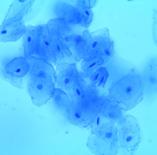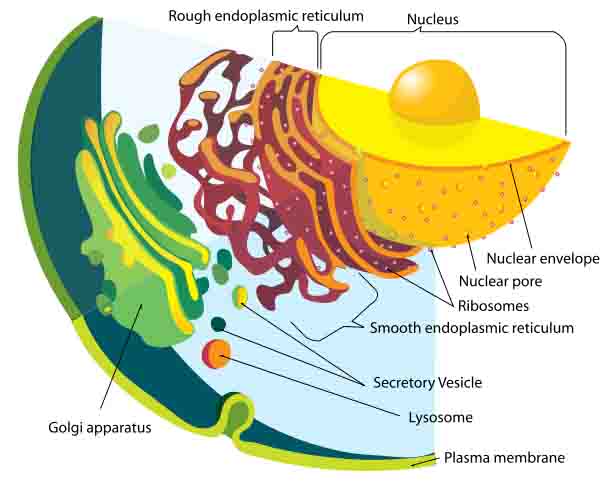 | ||||
Eukaryotic Cell Structures, Functions & Diagrams - P2
Parts of the Eukaryotic Endomembrane System
- Nucleus: The nucleus is typically the largest and most visible organelle in a eukaryotic cell. Bound by a double-layer nuclear membrane, the nucleus contains the cell’s genome—the main genetic instructions in the form of DNA (deoxyribonucleic acid).
- Endoplasmic Reticulum: Functioning mainly as a factory for making and shipping proteins and lipids, the ER is a network of hollow tubes, extending off of the nuclear membrane. There are two types of ER, rough and smooth. Rough endoplasmic reticulum is covered with ribosomes, non-membrane-bound organelles which are the sites of protein synthesis within the cell.
SPO VIRTUAL CLASSROOMS
VIDEO: Watching movement of wax blobs in a lava lamp is an excellent way to help students understand how organelles of the eukaryotic endomembrane system ship materials into, out of and around within the cell.
- Golgi Body: These pancake-like stacks of vesicles are another type of factory within the cell. The Golgi body modifies cellular molecules and coordinates the packaging and shipment of materials out of the cell. It's also the only organelle that can generate lysosomes.
- Vesicles: The amazing thing about the endomembrane system of eukaryotes is that, since all of the endomembrane organelles are covered in a lipid bilayer, pieces of an organelle (such as the endoplasmic reticulum or the Golgi body) can enclose a molecule for transport, break off like a little bubble, and travel to another organelle, or to the plasma membrane, to deliver the cargo.
- Lysosomes: This specialist vesicle contains lysozymes, enzymes that can degrade organic materials. They function in cellular digestion and recycling materials within the cell.
- Peroxisomes: A type of specialist vesicle required by cells that use aerobic respiration (oxygen to extract energy from food) and made by the endoplasmic reticulum. Peroxisomes are armed with enzymes that break down dangerous oxygen free radicals.
Human Cheek epithelial cells stained with methylene blue and viewed at 400xTM.
PAGE 2 < Back to Page 1
The Virtual Cell Biology Classroom provides a wide range of free educational resources including Power Point Lectures, Study Guides, Review Questions and Practice Test Questions.
Page last updated: 3/2016
Eukaryotic Endomembrane System
The main distinction between prokaryotic
and eukaryotic cells is the presence of membrane-bound organelles, a feature that only eukaryotes have. Organelles of the endomembrane system separate functions within the eukaryotic cell, like a bunch of tiny factories that work together to help the cell run.
Organelles that are membranous have an additional handy feature, a built-in internal transportation system.
Because membranous organelles are enclosed by the same type of material as the plasma
membrane is made of (phospholipids and proteins), cellular supplies can easily be shipped when a piece of one membrane-bound organelle breaks off, forming a vesicle that travels within the cell, and then fuses with a different membrane-bound organelle. Material can also enter (endocytosis) or exit (exocytosis) the cell via this method.
Continued ...



